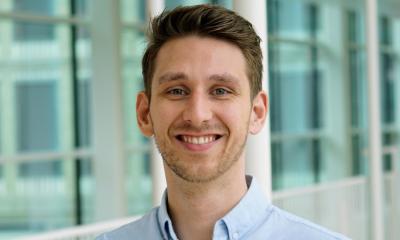Paediatrics
In-line filters significantly lower severe complications
The use of in-line filters for infusion therapy significantly lowers the rate of severe complications in children aged between 0-18 years being treated in intensive care units, according to a new study from the Paediatrics Clinic at Hannover Medical School (MHH). The study also confirmed that the number of cases of systemic inflammatory response syndrome, SIRS, dropped substantially through the use of this procedure.

Discussion about the use of in-line filters in ICUs is not new. For a while, filters were mainly recommended and used to keep micro-organisms at bay. However, an indisputable benefit, particularly in terms of the number of sepsis cases, was never conclusively proved in any studies, explained Dr Michael Sasse, Senior Consultant paediatrician in the ICU at the Hannover Medical School Paediatrics Clinic, who was among the initiators of the study. ‘In-line filtration reduces severe complications and length of stay on the paediatric intensive care unit’.
However, since verification that fine dust caused by diesel engines can cause infectious reactions if inhaled, resulting in the introduction of preventive fine dust filters, concern has increased over ‘fine dust’ in infusions. Moreover, in recent years, the number of drugs administered daily on ICUs and their administration by infusion has increased substantially. According to Dr Sasse, this results from increasing economic pressure on ICUs. ‘The average patient on our intensive care ward receives around 50 drug administrations per day, be it via syringe pump, short infusion or bolus,’ he points out. A solution always includes particles – an estimated 100,000 per litre of infusion. They are unavoidable, a part of the nature of any solution.
However, some of these minute particles are in fact avoidable. They only develop during the drug manufacturing process, be it through abrasion on threeway valves, or during preparation of a drug’s administration – such as the opening of a glass vial – or as a result of intolerance reactions involving several different drugs with respective precipitation reactions. The study carried out from 2005 – 2008 and published by Dr Sasse and his team in mid-2012 was the first in a clinical setting to examine whether filtration of particles has an impact on the patients’ state of health. 807 children participated, with 401 patients in the filtration group and 406 in the control group. The filters used were customary filters supplied by German firms Pall Cooperation and B. Braun Corporation. ‘You have to imagine it like this: An intensive care patient usually has five to six tubes through which infusions are administered. We placed filters in front of all of these access points to the body,’ Dr Sasse explains.
Different types of filter were used, such as the slightly coarser syringe filters (1.2 micrometres), as well as positively charged filters with a pore size of 0.2 mm. The advantage of the latter is that they also retain all the negatively charged particles, independent of their size.
Results were clear: The use of filters led to a significant reduction in the rate of complications across all age groups from 40.9% in the control group to 30.9% in the filtration group. The incidence of SIRS was also lowered from 30.3% in the control group to 22.4% in the filtration group. ‘Furthermore, we found that certain organs benefit from the use of filters,’ Dr Sasse explains.
A particular benefit was seen in the case of the lungs. ‘This is quite easy to image because the lung can be considered as the first filter for all infusions that flow through the body,’ he points out, but the kidneys and haematopoietic system also benefited from filtration, as seen from the organ dysfunction scores published in the study. Since the study evaluation, the ICU at the Hannover Medical School Paediatrics Department has used filters consistently and Dr Sasse is convinced that the results of the study are transferable to adults. ‘The group of 12 to 18-year-old patients benefited from the use of the filters in the same way that the newborns did,’ he says. extra length of hospital stay, treatment failures and sometimes death. The European Commission launched a 12-key action plan in November 2011 focusing on many sectors, including human and veterinary medicine. The aim is to instil and reinforce good practice over a period of five years, while introducing rigorous measures to prevent further spread of resistance. In the meantime 26 member states have implemented actions to prevent and control healthcare associated infections (HAI).
The Commission has also devoted €1 billion into AMR-related research including drug projects to use existing antimicrobials in a more efficient way and to develop new molecules on the market. The Commission is also Dr Sasse can also prove that using filters make financial sense: the length of ICU stay can be decreased by an average of 21.75 hours per patient – representing a 23% drop. Almost an entire day can thus be saved - a substantial economic advantage, which is not affected by the additional costs resulting from the use of filters and the additional amount of work.
Based on his calculations, the additional costs for 807 patients ran to around €50,000, but the release of 21.75hrs of stay in the ICU creates an additional 815 ‘spare’ days, meaning that an additional 209 patients a year can be admitted. In turn, this leads to an increase in revenue at the ICU of around €1,670,000 a year. For the Paediatrics Unit at the MHH it means that no patients have to be turned away due to a lack of capacity, as the numbers for the clinic roughly correspond. Appropriate staff training is indispensable for the successful introduction of a filtration system, Dr Sasse adds. ‘Without staff compliance the best filters won’t work and the investments will not pay off.’ He also recommends the use of planning software programmes, such as KIK. 4.0, so that drugs can be tested for their compatibility with one another before they are even administered to avoid precipitation or the formation of particles.
PROFILE
Dr. Michael Sasse completed his doctoral thesis on ventricular arrhythmia in 1999, qualified as a paediatrician and was appointed as acting senior practitioner in the Department of Paediatric Cardiology and Paediatric Intensive Care at Hannover Medical School (MHH), where he became Senior Consultant in the Department of Paediatric Intensive Care in 2000. Since 2003 he has also headed the Paediatric Intensive Care Network (PIN), since 2004, has worked as a trainer and course director for the European Resuscitation Council for European Paediatric Life Support (EPLS), European Paediatric Immediate Life Support (EPILS) and the Generic Instructor Course (GIC).
Report: Bettina Döbereiner
14.01.2013









